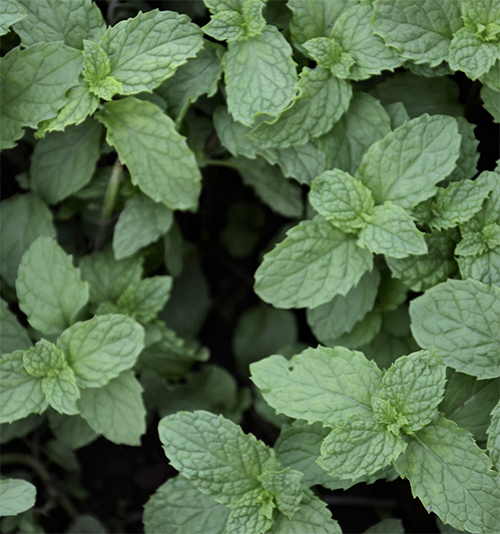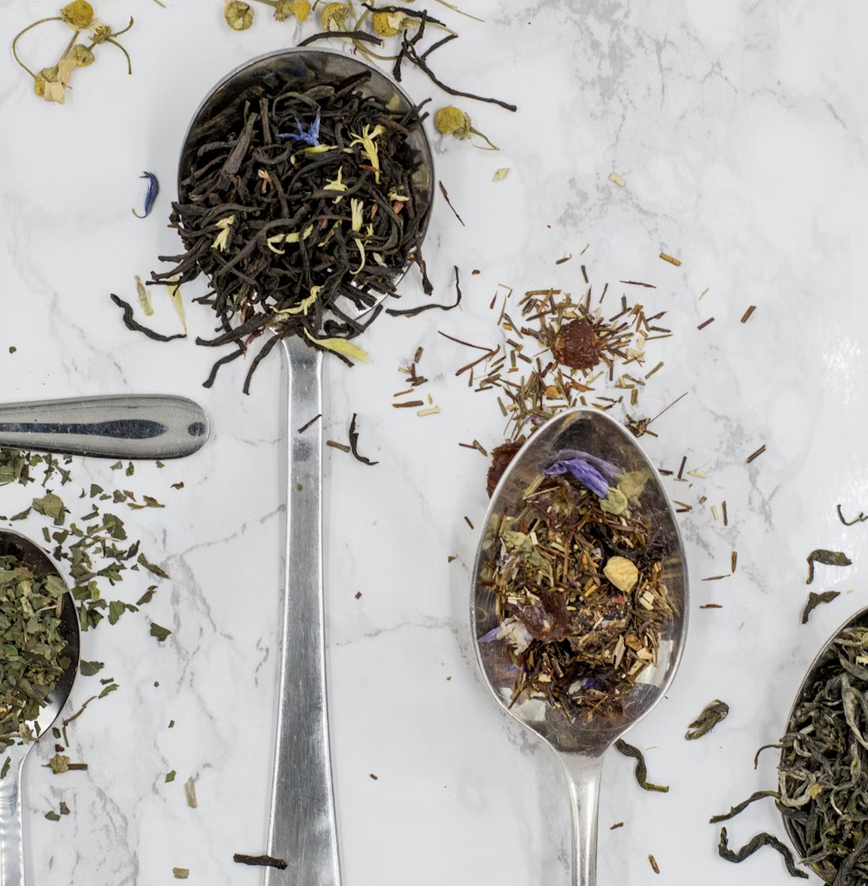
Herbs: Wellness in your own backyard
In addition to being incredibly easy to grow, herbs are really good for you. Cilantro, for example, is a powerful, natural chelation agent. Meaning, it helps remove heavy metals (and other toxic agents) from the body. Additionally, the oils in cilantro aid our digestive system in its production of digestive enzymes, and protect against bacterial infections such as salmonella. Cilantro can increase insulin secretion while lowering blood sugar. The cineole and linoleic acid in cilantro have anti-rheumatic and anti-arthritic properties.
The unique array of active constituents called flavonoids found in basil provide protection at the cellular level. Orientin and vicenin (two water-soluble flavonoids) protect cell structures as well as chromosomes from radiation and oxygen based damage. The oils found in basil leaves has demonstrated the ability to inhibit several species of pathogenic bacteria that have become resistant to commonly used antibiotic drugs. In a study published in the July 2003 issue of the Journal of Microbiology Methods, essential oil of basil was found to inhibit strains of bacteria from the genera Staphylococcus, Enterococcus and Pseudomonas, all of which are not only widespread, but now pose serious treatment difficulties because they have developed a high level of resistance to treatment with antibiotic drugs.
Dill’s unique health benefits come from two types of healing components: monoterpenes, (carvone, limonene, and anethofuran) and flavonoids, (kaempferol and vicenin). Monoterpenes in dill activate secretion of an enzyme called glutathione-S-transferase, which is extremely effective in neutralizing carcinogens.
Rich in potassium and full of vitamins, Tarragon can also be a star player in your healthy diet. Traditionally used in French cooking, Tarragon is unique and delicious, not to mention a terrific free radical scavenger. The major essential oils in Tarragon are estragole, cineol, ocimene and phellandrene. It is beneficial in reducing symptoms of arthritis because it contains elements that assist in keeping blood platelets and other compounds from adhering and accumulating. It also appears to be beneficial to overall digestive health and especially handy for keeping female organs running smoothly. *Though, as with any herb, check with healthcare provider before consuming if you are pregnant or nursing.
Sage contains numerous beneficial compounds that are know to have counter-irritant, anti-inflammatory, anti-allergic, anti-fungal, and anti-septic properties. One of the compounds found in Sage is Thujone. Thujone is a GABA and Seratonin receptor antagonist. Meaning, Thujone helps enhance concentration, attention span and quickens the senses. This compound also helps alleviate symptoms of grief and depression.
Sage is also a rich source of several B-complex vitamins, vitamin A, beta carotene, and Vitamin C.
These are just a few of the everyday, backyard herbs we can add to our favorite foods such as pasta, sandwiches, salads, scrambled eggs, marinades, etc.
***Please note, I’m suggesting the addition of fresh, frozen or dehydrated herbs. I am not referring to consuming herbs in supplement form, or consuming the harvested essential oils of herbs.
I recommend working with your healthcare provider or licensed nutritionist before consuming herbs in concentrated form.
Additional resources:
Houdret, J. and Farrow, J. (2006). The Practical Guide to Using Herbs. London: Anness Publishing Ltd.
Duke, J. A. (2002). Handbook of Medicinal Herbs, Second Edition. Boca Raton: CRC Press LLC

Meditation and brain plasticity
Scientists from Massachusetts General Hospital had 16 participants take an eight-week mindfulness meditation program. This sort of meditation focuses on nonjudgmental awareness of sensations and feelings. Subjects practiced for about 30 minutes a day.
Brain images were taken of each subject before and after the training. Scientists found increases in gray-matter density in the hippocampus—an area responsible for learning and memory. Also, they saw decreased density in the amygdala—which is responsible for our anxiety and stress responses.
For more information on this study, visit psys.org

Tea
Tea is the most commonly consumed beverage in the world after water. Among all varieties of tea - black, green, white, oolong, red, herbal - which one offers the most health benefits?
Black, green, white, and oolong teas derive their leaves from a warm-weather evergreen tree known as Camellia sinensis. The leaves from this tree contain polyphenols, which…..
The more processing tea leaves undergo, the darker they will turn. Green tea and white tea are the least processed tea. They are simply steamed quickly. White tea is derived from the young new leaves from the Camellia plant in early spring. These young leaves contain no chlorophyll, so they are silvery white. Black and oolong teas are partially dried, crushed and fermented. Regardless of the processing method, black, green, white and oolong teas all contain polyphenols. In fact, tea ranks as high as or higher than many fruits and vegetables in the ORAC score, a score that measures antioxidant potential of plant-based foods.
That being said, does green tea have more antioxidants than black tea? Should I drink instant tea or loose leaf tea for better health benefits? Is hot tea better than iced tea? Here’s what it boils down to:
-
Higher quality teas may have more catechin antioxidants than lower quality teas (catechin is a tannin peculiar to green and white tea because the fermentation process reduces catechins in black tea. Catechin is a powerful, water soluable polyphenol and antioxidant).
-
White tea has more antioxidants than any other tea.
-
Freshly brewed teas have more polyphenol antioxidants than instant or bottled teas.
- More researchers seem to agree that brewed (cold or hot) or caffeinated tea has more antioxidants than instant teas.
What about Herbal Tea and Red Rooibos Tea?
Herbal tea is not derived from the leaves of the Camellia plant and so does not have the particular health-promoting properties. Indeed, most herbal teas in the market are NOT tea at all. They are only infusions made with herbs, flowers, roots, spices or other parts of some plants. The proper term for this type of beverage is "tisane."
The recently popular South African red Rooibos tea also falls within the herbal tea or tisane category. Red Rooibos tea is not really tea, as it is not derived from the Camellia plant. Although tisane does not contain as many polyphenols, it does promote other various health qualities such as relaxation and calming effects.
Tea: Caffeine content
According to the American Dietetic Association, a cup of tea contains an average of 40 mg of caffeine, compared to 85 mg as found in a cup of freshly brewed coffee.
It’s important to note, healthy people can benefit from small amounts of caffeine. Natural sources of caffeine provide helpful energy and alertness.
Also, studies show that caffeine may assist the anti-cancer activities of the antioxidant polyphenol catechins from green tea. Green tea caffeine combined with green tea catechins reduces more abdominal fat than green tea without any caffeine.
What about Decaf Tea?
Decaffeinated tea is believed to contain only about half the amount of polyphenol as regular tea, depending on how the tea was decaffeinated.
Three processes are widely used with different results.
- The carbon dioxide (CO2) process retains the most antioxidants and flavor.
- The ethylene acetate process retains less antioxidants and flavor. Ethylene acetate decaffeination is also called “natural decaffeination.”
- Methylene chloride is also used for decaffeination and may have side effects. Methylene chloride for decaffeination is restricted in the United States.
The Bottom Line
There’s simply no denying that a daily spot of tea does the body good. Tea contains high levels of antioxidants, some of which are called polyphenols, flavonoids, and catechins, and all of which take on the “free radicals” in the body and prevent them from harming the healthy cells on board. In other words, sending in antioxidants is disease prevention in its finest form.
To get the most health benefits out of your teas, choose high-quality loose leaf teas from your local or online tea shop. Brew it up and enjoy. And of course, don’t throw out the idea of enjoying instant or bottled teas when you’re on the go. You just might have to drink a little more. Bottoms up!
photo: unsplash.com/@stri_khedonia

Yoga and Gaba
Researchers at Boston University School of Medicine recently set out to contrast the brain gamma-aminobutyric acid (GABA) levels of yoga practitioners with those of participants who spent time walking. GABA is the chief inhibitory neurotransmitter in the mammalian nervous system. In other words, it chills us out. (People with depression and anxiety have low amounts of GABA in their cerebrospinal fluid.)
The study was this: Research subjects practiced yoga or walked for an hour, three times a week for twelve weeks. The yoga practitioners reported improved mood and anxiety compared to the walking controls, and MRIs showed increased GABA in the thalamus (the part of the brain that processes and relays movement and sensory information) of the yoga practitioners compared to the walkers. The increase in GABA correlated with the decrease in anxiety scores. Since there is a body of evidence that suggests exercise is helpful for treating depression and anxiety, it is interesting to see that yoga could be even more helpful than regular exercise.
photo: https://unsplash.com/@jadestephens
